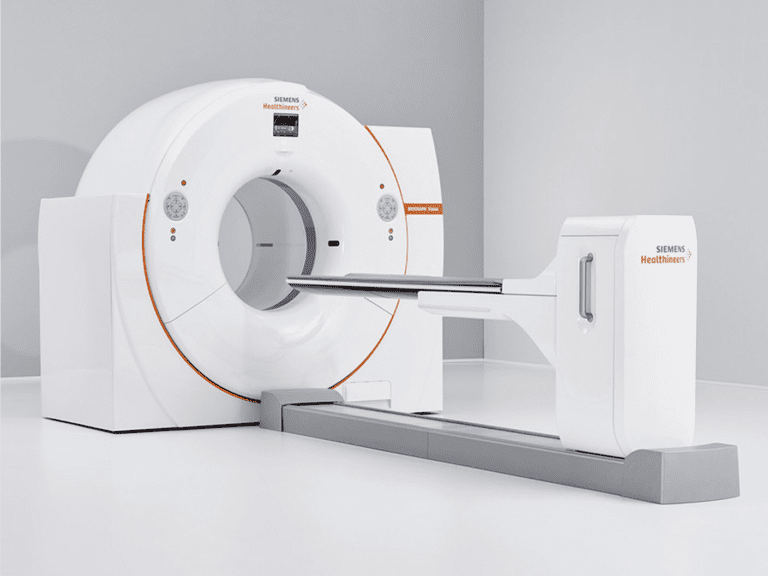PET CT Scan
Clinical Applications of PET-CT
Written By Dr. Sherine Hamed
Specialist of Diagnostic Radiology – Teleradiology Medical Administrator

What is a PET scan?
- A positron emission tomography (PET) scan is an imaging test that produces images of your organs and tissues at work. The test uses a safe, injectable radioactive chemical called a radiotracer and a device called a PET scanner.
- The scanner detects diseased cells that absorb large amounts of the radiotracer, which indicates a potential health problem.
- Healthcare providers frequently use PET scans to help diagnose cancer and assess cancer treatment. They can also assess certain heart and brain issues with the scan.
- A PET scan is typically an outpatient procedure, which means you can go about your day after the test is finished.
What’s the difference between a PET scan, CT scan and MRI?
- PET scans use a radioactive tracer to show how an organ is functioning in real-time. PET scan images can detect cellular changes in organs and tissues earlier than CT and MRI scans. The healthcare provider may perform a PET scan and CT scan at the same time (PET-CT). This combination test produces 3D images that allow for a more accurate diagnosis. CT scan uses a series of X-rays and a computer to create detailed images of your bones and soft tissues. while MRI uses a large magnet, radio waves, and a computer.
- Some hospitals now use a hybrid PET/MRI scan. This new technology creates extremely high-contrast images. Providers mainly use this type of scan for diagnosing and monitoring cancers of the soft tissues (brain, head and neck, liver, and pelvis).
- PET scans show metabolic changes occurring at the cellular level in an organ or tissue. This is important because diseases often begin at the cellular level. CT scans and MRIs show morphologic changes happening in different body systems but cannot reveal problems at the cellular level.
What are the indications for a PET scan?
- To detect primary cancer and metastatic spread, evaluate the effect of cancer therapy, and determine the prognosis.
- To Assess myocardial viability, in patients before referral for cardiac transplantation, and coronary artery disease in symptomatic patients, to differentiate ischemic and non-ischemic cardiomyopathy, and to discriminate between benign and malignant cardiac lesions.
- To examine the brain abnormalities for people with specific brain disorders such as Cognitive impairment and dementia, neurodegenerative disorders such as Alzheimer’s disease (AD), and epilepsy.
What are the risks and side effects of a PET scan?
In general, PET scans are safe and rarely cause problems. The amount of radiation in the radioactive tracer is very low. It doesn’t stay in the body for a long time, and drinking lots of water after a PET scan helps flush the radioactive drug from your body.
PET scans generally only pose risks in the following situations:
- Pregnant, or breastfeeding should not get PET scans. The radiation may be harmful to a fetus and can pass to an infant in breast milk.
- Some people have an allergic reaction to PET scan radioactive tracers or CT scan contrast dyes. The medical team can give you medication to quickly slow and stop this response if it happens.
- People with diabetes may not absorb the sugar in the radiotracer, which can affect scan results. The healthcare provider will offer suggestions to modify your diet and medications before the test to control glucose levels during the day of the test.
What is the role of teleradiology in PET CT Scan Interpretation?
Teleradiology as a service is offered by teleradiology companies, starting with emergency services, but expanding to subspecialty reads and day coverage.
Rology platform provides services that allow medical practitioners and institutions to have around-the-clock access to quality radiology reporting categorized by subspecialty.
PET CT scan interpretation is one of our services as the modalities are sent to the subspecialized radiologists to provide diagnostic interpretation and final reporting.

